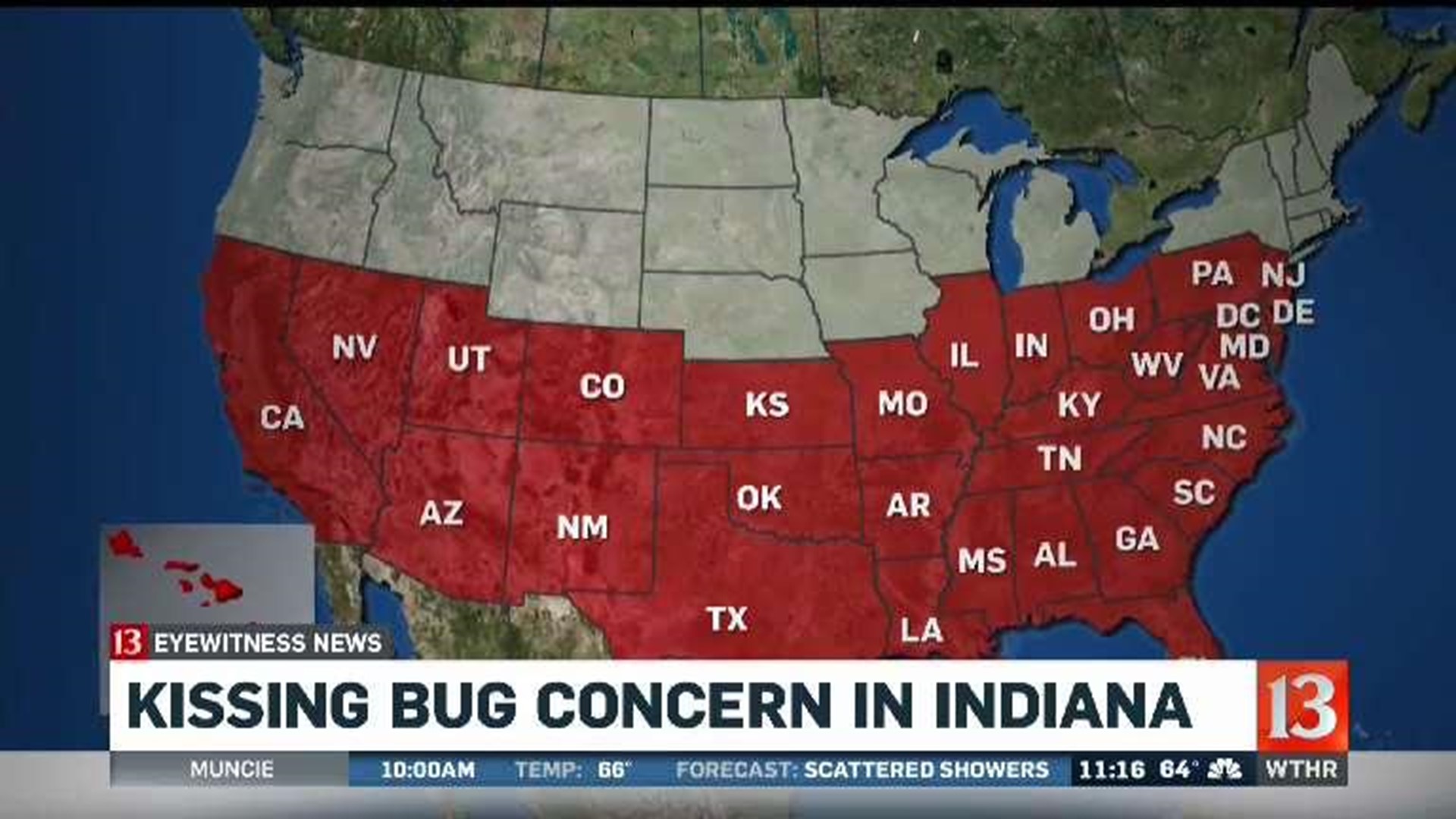INDIANAPOLIS (WTHR) – The Center for Disease Control and Prevention is warning U.S. residents of a deadly bug that can be found in Indiana.
The insect, called Triatominae, has been nicknamed the "kissing bug."
The bloodsucking bugs can live indoors, in cracks and holes of substandard housing, or in a variety of outdoor settings including:
- Beneath porches
- Between rocky structures
- Under cement
- In rock, wood, brush piles, or beneath bark
- In rodent nests or animal burrows
- In outdoor dog houses or kennels
- In chicken coops or houses
The “kissing bug” is native to Indiana. Although the bug can transmit Chagas disease, Indiana has never had a case of Chagas, which is typically found in tropical or subtropical climates, according to the Indiana State Department of Health.
The bugs get infected by biting an infected animal or person, and then they spread the disease when they bite someone else. While Hoosiers might find these bugs in Indiana, there is a very low risk that they can spread Chagas disease because it isn’t present here to serve as a source of transmission.
According to the CDC, Chagas disease transmitted by the "kissing bug" can cause heart rhythm abnormalities that can cause sudden death, a dilated heart that doesn’t pump blood well and/or a dilated esophagus or colon, leading to difficulties with eating or passing stool.


Travis Sams of WKDQ wrote that he found what looked like a Triatomine in his house recently.
If you find a "kissing bug" in your home, the CDC says you should not touch or squash it.
"Place a container on top of the bug, slide the bug inside, and fill it with rubbing alcohol or, if not available, freeze the bug in the container. Then, you may take it to your local extension service, health department, or a university laboratory for identification," the CDC advises on their website. "Surfaces that have come into contact with the bug should be cleaned with a solution made of 1 part bleach to 9 parts water (or 7 parts ethanol to 3 parts water)."

